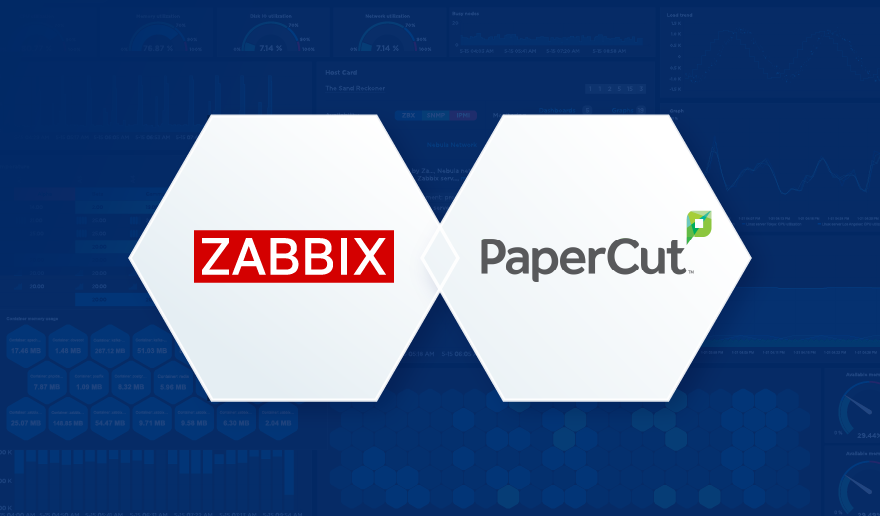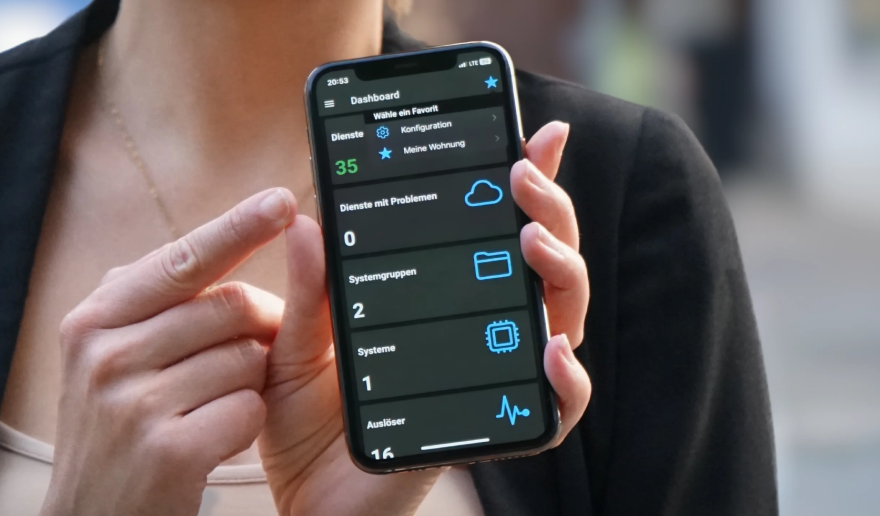Servers are the foundation of a company’s IT infrastructure, and the cost of server downtime can include anything from days without system access to the loss of important business data. This can lead to operational issues, service outages, and steep repair costs.
Viewed against this backdrop, server monitoring is an investment with massive benefits to any organization. The latest generation of server monitoring tools make it easier to assess server health and deal with any underlying issues as quickly and painlessly as possible.
Table of Contents
What are servers, and how do they work?
Servers are computers (or applications) that run software services for other computers or devices on a network. The computer takes requests from the client computers or devices and performs tasks in response to the requests. These tasks can involve processing data, providing content, or performing calculations. Some servers are dedicated to hosting web services, which are software services offered on any computer connected to the internet.
What is server monitoring? Why does it matter?
Servers are some of the most important pieces of any company’s IT infrastructure. If a server is offline, running slowly, or experiencing outages, website performance will be affected and customers may decide to go elsewhere. If an internal file server is generating errors, important business data like accounting files or customer records could be compromised.
A server monitoring system is designed to watch your systems and provide a number of key metrics regarding their operation. In general, server monitoring software tests for accessibility (making sure that the server is alive and can be reached) and response time (guaranteeing that it is running fast enough to keep users happy). What’s more, it sends notifications about missing or corrupt files, security violations, and other issues.
Server monitoring is most often used for processing data in real time, but quality server monitoring is also predictive, letting users know when disks will reach capacity and whether memory or CPU utilization is about to be throttled. By evaluating historical data, it’s possible to find out if a server’s performance is degrading over time and even predict when a complete crash might occur.
How can server monitoring help businesses?
Here are a few of the most important business benefits of server monitoring:
Server monitoring tools give you a bird’s-eye view of your server’s health and performance
A quality server monitoring tool keeps IT administrators aware of metrics like CPU usage, RAM, disk space, and network bandwidth. This helps them to see when servers are slowing down or failing, allowing them to act before users are affected.
Server monitoring simplifies process automation
IT teams have long checklists when it comes to managing servers. They need to monitor hard disk space, keep an eye on infrastructure, schedule system backups, and update antivirus software. They also need to be able to foresee and solve critical events, while managing any disruptions.
A server monitoring tool helps IT professionals by automating all or many aspects of these jobs. It can show whether a backup was successful, if software is patched, and whether a server is in good condition. This allows IT teams to focus on tasks that benefit more from their involvement and expertise.
Server monitoring makes it easier to retain customers as well as employees
Acting quickly when servers develop issues (or even before) makes sure that employee workflows aren’t disrupted, allowing them to perform their duties, see results, and reach their goals. It also guarantees a positive customer experience by providing early notification of any issues.
Server monitoring keeps costs down
By automating processes and tasks (and freeing up time in the process) server monitoring systems make the most of resources and reduce costs. And by solving potential issues before they affect the organization, they help businesses avoid lost revenue from unfinished employee tasks, operational delays, and unfinished purchases.
What should you look for in a server monitoring solution?
Now that you’re sold on the benefits of server monitoring, you’ll want to choose the server monitoring solution that’s right for you. Here are a few capabilities to keep in mind:
Ease of use
Does the solution include an intuitive dashboard that makes it easy to monitor events and react to problems quickly? It should, and it should also allow you to make the most of the data it exports by providing graphs, reports, and integrations.
Customer support
Is it easy to contact support? How quickly do they respond? A quality server monitoring solution will provide a defined SLA and stick to it with no exceptions.
Breadth of coverage
A good solution will support all the server types (hardware, software, on-premises, cloud) that your enterprise uses. It should also be flexible enough to support any server types you may implement in the future.
Alert management
There are a few important questions to ask when it comes to alerts:
- Does the solution include a dashboard or display that makes it easy to track events and react to problems quickly?
- Is it easy to set up alerts via the configuration of thresholds that trigger them? How are alerts delivered?
- Does the solution have a way to help you determine why a problem has occurred, instead of just telling you that something has gone wrong without context?
What are some best practices to keep in mind?
Here are a few best practices that will help you avoid the more common server monitoring pitfalls:
Proactively check for failures
Keep a sharp eye out for any issues that may affect your software or hardware. The tools included with a good monitoring solution can alert you to errors caused by a corrupted database (for example) and let you know if a security incident has left important services disabled.
Don’t forget your historical data
Server problems rarely occur in a vacuum, so look into the context of issues that emerge. You can do that by exploring metrics across a specific period, typically between 30 to 90 days. For example, you may find that CPU temperature has increased within the past week, which may suggest a problem with a server cooling system.
Operate your hardware in line with recommended tolerance levels
File servers are commonly pushed to the limit, rarely getting a break. That’s why it’s important to monitor metrics like CPU utilization, RAM utilization, storage capacity usage, and CPU temperature. Check these metrics regularly to identify issues before it’s too late.
Keep track of alerts
Always monitor your alerts in real time as they occur and explore reliable ways to manage and prioritize them. When escalating an incident, make sure it goes to the right individual as soon as possible.
Use server monitoring data to plan short-term cloud capacity
Server monitoring systems can help you plan the right computing power for specific moments. If services become slower or users experience other problems with performance, an IT manager can assess the situation through the server monitor. They’ll then be able to allocate extra resources to solve the problem.
Take advantage of capacity planning
Data center workloads have almost doubled in the past 5 years, and servers have had to keep up with this ongoing change. Analyzing long-term server utilization trends can prepare you for future server requirements.
Go beyond asset management
With server monitoring, you can discover which systems are approaching the end of their lives and whether any assets have disappeared from your network. You can also let your server monitoring tool handle the heavy lifting for you when it comes to tracking physical hardware.
The Zabbix Advantage
Zabbix is designed to make server monitoring easy. Our solution allows you to track any possible server performance metrics and incidents, including server performance, availability, and configuration changes.
Intuitive dashboards, network graphs, and topology maps allow you to visualize server performance and availability, and our flexible alerting allows for multiple delivery methods and customized message content.
Not only that, our out-of-the-box templates come with preconfigured items, triggers, graphs, applications, screens, low-level discovery rules, and web scenarios – all designed to have you up and running in just a few minutes.
And because Zabbix is open-source, it’s not just affordable, it’s free. Contact us to find out more and enjoy the peace of mind that comes from knowing that your servers are under control.
FAQ
Why do we need server monitoring?
Server monitoring allows IT professionals to:
- Monitor the responsiveness of a server
- Know a server’s capacity, user load, and speed
- Proactively detect and prevent any issues that might affect the server
Why do companies choose to monitor their servers?
Companies monitor servers so that they can:
- Proactively identify any performance issues before they impact users
- Understand a server’s system resource usage
- Analyze a server for its reliability, availability, performance, security, etc.
How is server monitoring done?
Server monitoring tools constantly collect system data across an entire IT infrastructure, giving administrators a clear view of when certain metrics are above or below thresholds. They also automatically notify relevant parties if a critical system error is detected, allowing them to act in a timely manner to resolve issues.
What should you monitor on a server?
Key areas to monitor on a server include:
- A server’s physical status
- Server performance, including CPU utilization, memory resources, and disk activity
- Server uptime
- Page file usage
- Context switches
- Time synchronization
- Process activity
- Server capacity, user load, and speed
If I want to monitor a server, how easy is it to set things up?
Setting up a server monitoring tool is easy, provided you’ve taken into account these 5 steps:
- Assess and create a monitoring plan
- Discover how data can be collected
- Define any and all metrics
- Set up alerts
- Have an established workflow







 Prev Post
Prev Post 




